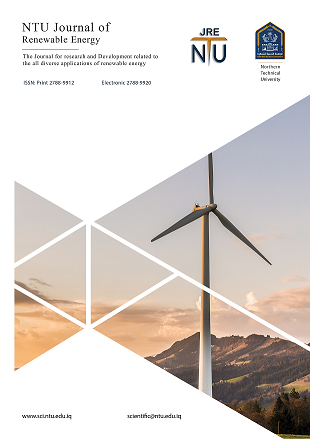Numerical and experimental assessment of PV/Solar Chimney
DOI:
https://doi.org/10.56286/ntujre.v2i1.229Abstract
One of the main obstacles facing solar chimney systems is their low efficiency which contributed to the decrease in the construction of solar chimneys in the world. The current article presents a novel proposal to enhance the efficiency of solar chimneys by using solar panels. In this new system, the solar cells are fixed in the mid-distance between the chimney base and the glass cover. Therefore, the air can move above and below the solar cells to accelerate the photovoltaic cells' cooling and obtain higher air velocity.
The results also showed that the photovoltaic cell location determines its temperature, where high temperatures characterized the solar panels fixed in the middle. In contrast, the solar cells that are placed on the ends were at lower temperatures. The outcomes also confirmed that the air velocity in the new design still depends on weather conditions, and the results show that the chimney base is the ideal location for the turbine, and the air velocity rises during the day to reach its maximum value at 1 p.m. The highest recorded air velocity was 1.8 m/s in February at 1 p.m. High-efficiency values were recorded in the early morning because of the solar cells' low temperatures for the tested months. The highest recorded electrical efficiency value was 17.8% in December. In contrast, the lowest recorded electrical efficiency was 10.6% in February at 1 p.m.
Downloads
Published
Issue
Section
License
Copyright (c) 2022 NTU Journal of Renewable Energy

This work is licensed under a Creative Commons Attribution 4.0 International License.








